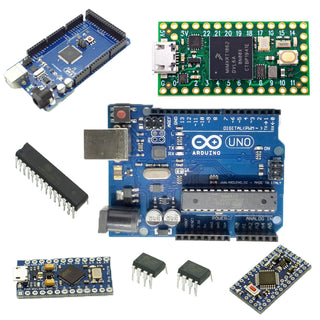Ask any field or bench technician what their most-used piece of test equipment is and they will probably say a DMM (Digital MultiMeter). These versitiale devices can be used to test and diagnose a wide range of circuits and components. In a pinch, a DMM can even substitute for expensive, specialized test equipment. One particularly usefull skill is knowing how to test a transistor using a digital multimeter. Specialized component analyzers exist to do this task, but the expense can be difficult to justify for the average hobbiest.
Transistor Pinouts

Fortunately, using a DMM to get a basic pass/fail reading from a suspected faulty NPN or PNP bipoloar transistor is a simple and quick task. Some multimeters have a built-in transistor testing function, if yours does, you can skip this blog post – simply insert your transistor into the socket on the multimeter and set the meter to the correct mode. You will probably get information such as the gain(hFE) that could be checked against the datasheet as well as a pass/fail reading. If your meter does not have a transistor testing function, fear not – transistors can easily be checked with the “Diode” testing setting. (Some meters have the diode test function coupled with the continuity test – this is OK).
Testing the transistor
Remove the transistor from the circuit for accurate test results.
Step 1: (Base to Emitter)
Hook the positive lead from the multimeter to the to the BASE (B) of the transistor. Hook the negative meter lead to the EMITTER (E) of the transistor. For an good NPN transistor, the meter should show a voltage drop between 0.45V and 0.9V. If you are testing PNP transistor, you should see “OL” (Over Limit).
Step 2: (Base to Collector)
Keep the postitive lead on the BASE (B) and place the negative lead to the COLLECTOR (C).
For an good NPN transistor, the meter should show a voltage drop between 0.45V and 0.9V. If you are testing PNP transistor, you should see "OL" (Over Limit).
Step 3: (Emitter to Base)
Hook the positive lead from the multimeter to the to the EMITTER (E) of the transistor. Hook the negative meter lead to the BASE (B) of the transistor.
For an good NPN transistor, you should see “OL” (Over Limit).If you are testing PNP transistor, the meter should show a voltage drop between 0.45V and 0.9V.
Step 4: (Collector to Base)
Hook the positive lead from the multimeter to the to the COLLECTOR (C) of the transistor. Hook the negative meter lead to the BASE (B) of the transistor.
For an good NPN transistor, you should see “OL” (Over Limit).If you are testing PNP transistor, the meter should show a voltage drop between 0.45V and 0.9V.
Step 5: (Collector to Emitter)
Hook the postitive meter lead to the COLLECTOR (C) and the negative meter lead to the EMITTER (E) – A good NPN or PNP transistor will read "OL"/Over Limit on the meter. Swap the leads (Positive to Emitter and Negative to Collector) – Once again, a good NPN or PNP transistor should read “OL”.
If your bipolar transistor measures contrary to these steps, consider it to be bad.
You may also be able to use the voltage drop to determine which lead is the emitter on an unmarked transistor, as the emitter-base junction typically has a slightly higher voltage drop than the collector-base junction.
Remember: This test only verifies that the transistor is not shorted or open, it does not guarantee that the transistor is operating within its designed parameters. It should only be used to help decide if you need "replace" or "move on to the next component". This test works on bipolar transistors only – you need to use a different method for testing FETs.



